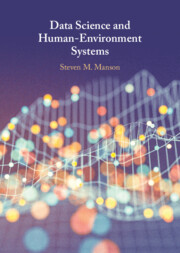Book contents
- Data Science and Human-Environment Systems
- Data Science and Human-Environment Systems
- Copyright page
- Contents
- Figures
- Tables
- Preface
- Acknowledgments
- 1 Data Science and Human-Environment Systems
- 2 Data Gaps and Potential
- 3 Big Methods, Big Messes, Big Solutions
- 4 Theory and the Perils of Black Box Science
- 5 Policy Dilemmas
- 6 Ways Forward for the Data Science of Human-Environment Systems
- References
- Index
- Plate Section (PDF Only)
6 - Ways Forward for the Data Science of Human-Environment Systems
Published online by Cambridge University Press: 02 February 2023
- Data Science and Human-Environment Systems
- Data Science and Human-Environment Systems
- Copyright page
- Contents
- Figures
- Tables
- Preface
- Acknowledgments
- 1 Data Science and Human-Environment Systems
- 2 Data Gaps and Potential
- 3 Big Methods, Big Messes, Big Solutions
- 4 Theory and the Perils of Black Box Science
- 5 Policy Dilemmas
- 6 Ways Forward for the Data Science of Human-Environment Systems
- References
- Index
- Plate Section (PDF Only)
Summary
Data science plays an increasingly prominent role in examining and addressing human–environment dynamics. The growing role of data-intensive inquiry is apparent to many researchers, policymakers, and others. At the same time, however, there is mounting awareness of the interplay between the perils and promise of big data for human-environment systems in particular. Despite all the research and interest, there are few straightforward ways to reconcile the pros and cons of data science. This difficulty stems partly from the many unknowns about data science because its story is still being written. There are exciting developments in data science theory, conversations around democracy and decision-making, and promising developments in data science infrastructure.
- Type
- Chapter
- Information
- Data Science and Human-Environment Systems , pp. 198 - 212Publisher: Cambridge University PressPrint publication year: 2023

